Two New Ions: ASUS AT3N7A-I and ASRock Ion 330
by Anand Lal Shimpi on August 28, 2009 12:00 AM EST- Posted in
- Motherboards
The first companies to support non-Intel products are those that have the weakest relationships with Intel. How Intel is able to ensure this is the crux of the AMD v. Intel antitrust suit, but that’s not the point of today’s story.
NVIDIA’s Ion platform, at least when first introduced, combined Intel’s Atom CPU with NVIDIA’s GeForce 9300/9400M integrated graphics chipset. This offered better performance and modern features compared to Intel’s 945G chipset, what Intel was bundling with Atom. Intel still sold the CPUs but it lost the chipset sale and got upstaged by NVIDIA. Intel doesn’t like being upstaged by anyone.
Intel’s partners are very cautious when supporting a product like Ion. They don’t want to appear too eager and thus Intel’s closest partners wait to see if a product like Ion succeeds before attempting to jump on the bandwagon.
Zotac built the first mini-ITX Ion motherboard. While Zotac builds several Intel motherboards, they are hardly considered a tier 1 motherboard manufacturer. Zotac doesn’t get preferential treatment by Intel and thus Zotac doesn’t have to worry about ruffling any feathers by releasing an Ion motherboard.
I can’t tell you how well the Zotac Ion has sold, but reading our review and user experiences with the board I can tell you that customers are pleased. It’s a good product and it fills a niche that Intel currently has no answer to. I’m not even sure if Pine Trail will address that market either.
ASUS was Intel’s launch partner for Atom. The first place you found the Atom processor was in ASUS’ Eee PC and Eee Box. The rest of the OEMs followed. It’s no surprise that ASUS didn’t build an Ion motherboard or an Ion netbook for that matter.
ASUS tested the waters with its value manufacturing brand earlier this year. ASRock put out an Ion system based on the Intel Atom 330 processor; note the use of the word system. The ASRock Ion differed from the Zotac Ion motherboard in that it was a barebones system complete with mini-ITX chassis, external power supply, 2GB of RAM, slim optical drive and 320GB hard drive. All you needed to add was an OS.
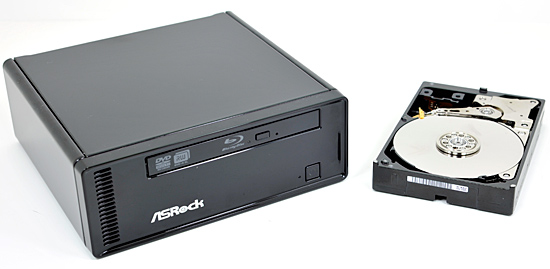
The ASRock Ion 330 (left) vs. a 3.5" HDD (right). We're not too far away from having P4-class PCs in the space of a hard drive.
The whole package sets you back $379.99 (ASRock does charge a slight premium for building the thing).
A couple of weeks ago we got word that the second mini-ITX Ion motherboard was coming our way. The manufacturer? ASUS. Ballsy.
Unlike the ASRock and Zotac Ion solutions, ASUS gave its Ion board a real and unnecessarily complex name. This is the AT3N7A-I:

Also gone is the North American favorite “Rock Solid, Heart Touching” phrase on the box. Instead we’re given two new slogans: Inspiring Innovation, Persistent Perfection (hooray for alliteration) and Perfectly suit your digital lifestyle.
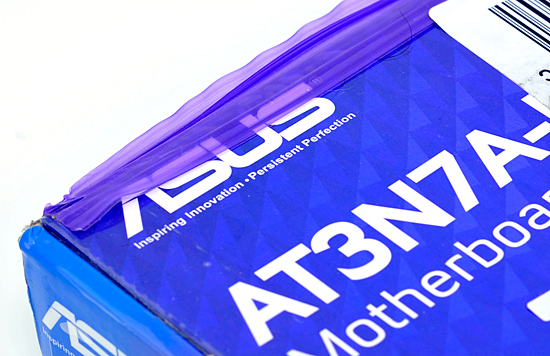
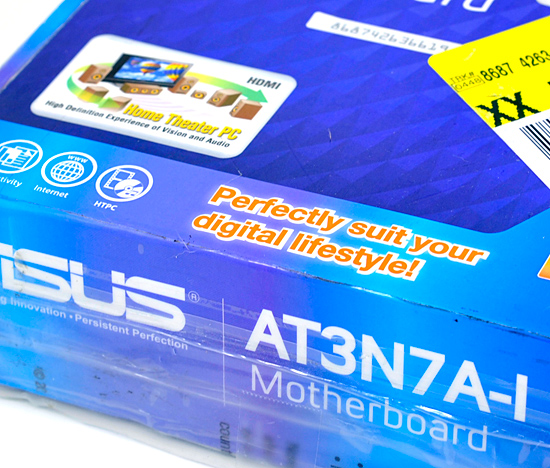
A Closer Look at the ASUS AT3N7A-I
ASUS’ Ion board doesn’t come with a power supply, it instead has a 24-pin ATX power supply connector and a 4-pin 12V connector for CPU power. The ASUS Ion is eerily similar to the Zotac board but with poorer color choices.
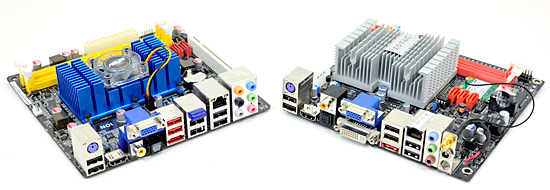
Zotac’s board has on-board WiFi, while ASUS’ board has on-board Bluetooth.

ASUS (left) vs. Zotac (right)
ASUS adds a ton more USB ports on the rear of the AT3N7A-I. You get a total of 8 USB ports (+2 more via an internal header), a single PS2 port, HDMI out, VGA out, coax/optical out, eSATA, Ethernet and the standard array of six 1/8” jacks for analog audio out.

On the board itself there are three SATA ports, like the Zotac board, but ASUS also adds a standard 32-bit PCI slot (not PCIe).
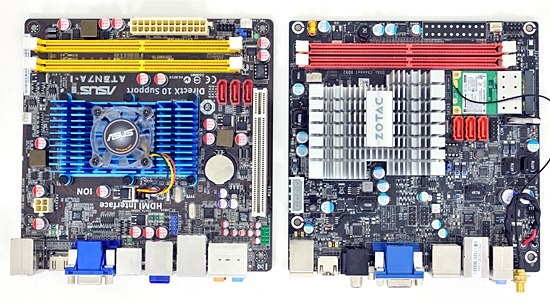
ASUS (left) vs. Zotac (right)
Two DIMM slots round out the package.










61 Comments
View All Comments
millerduck - Friday, August 28, 2009 - link
Thanks Anand. Looking forward to any news.MD